About TLB
Literary / Cultural Heritage and Architecture
Taiwan Literature Base is located in the Qidong Street Japanese-era dormitory complex. It is one of the few areas remaining in Taiwan with historical buildings in such good condition. It is also the first dormitory complex from the Japanese Colonial Period to be preserved under the Cultural Assets Preservation Law. Today, the area is a municipal historical site covering nine historical buildings. It not only contains rich local stories and connections with the surrounding community but also highlights the significance of contemporary historical preservation, conservation, and revitalization efforts.
Qidong Street is a friendly “smile” couched amidst the cookie-cutter street grid of downtown Taipei. The street wends between Jinan Road and Zhongxiao East Road. Behind this smile is a long, hidden history that dates back to the early 18th century. Qidong Street is a remnant of Sanbanqiao Street and the main thoroughfare of the late-19th-century Sanbanqiao Village. The street was part of a main road that once linked Songshan and Keelung and was an important route for transporting rice, coal, and other daily necessities.
Between the 1920s and 1940s during the Japanese Colonial Period, the colonial government built many Japanese-style dormitories here for civil servants, the remnants of which form today’s Qidong Street Japanese-era dormitory complex. Concurrently, businesses and factories moved into the area, bringing the bustle of commerce and, ultimately, leading to the creation of the City East Club, which regularly held community lectures as well as drama, play, and movie performances and pioneered the area’s art and culture scene.
After the war, the government continued to use the area as a residence for central government officials. Major-General Wang Shu-ming, the Deputy Commander-in-Chief of the ROC Air Force, moved into No. 27, Section 2, Jinan Road. He was later promoted to Commander-in-Chief of the ROC Air Force and served as Chief of Staff in the Ministry of National Defense. This old Japanese-style house continued to be known as the "General's House" until he moved out in 1992. In the midst of the city’s rapid development after 2000, the Japanese-era dormitories on Qidong Street, located on prime downtown real estate, faced imminent threat of demolition. Fortunately, residents in this “land of happiness” loved this cluster of historical buildings, its stately old trees, and their neighborhood. They formed the "Qidong Literature and History Studio" in 2002. The efforts of residents, experts, and scholars contributed to the preservation of the nine adjacent historical Japanese-era dormitories, which finally earned official recognition as 'an important and priceless historical and cultural asset of the citizens of Taipei City'.
Urban development brought new houses, schools, and factories to this corner of the city, and Sanbanqiao Street slowly disappeared from the map, leaving the smiling arc between Jinan Road and Zhongxiao East Road as the single reminder of that once-important thoroughfare. In 2009, the Ministry of Culture requested Taipei City Government’s Cultural Affairs Bureau to renovate the Qidong Street Japanese-era dormitories (Nos. 25 and 27, Section 2, Jinan Road), and named these historical buildings "Qidong Poetry House". In July 2014, the National Museum of Taiwan Literature took over administrative responsibilities and began planning literary-promotion-themed exhibitions and activities. Taiwan Literature Base, dedicated to promoting literary innovation and conserving cultural heritage, was officially inaugurated after the restored historical buildings on Lane 53, Qidong Street had been added to the complex in 2020.
Dormitory accommodations for senior Japanese colonial government and other officials
ROC Air Force Headquarters Deputy Commander-in-Chief Major General Wang Shu-ming moved into Building No. 27
Central Bank official Mr. Zhou Peng-nian moved into Building No. 25
General Wang Shu-ming moved out of his official residence
Mr. Zhou Peng-nian's widow moved out of their official residence
Qidong Literature and History Studio launched the Qidong Dormitory Rescue Initiative
Bank of Taiwan demolished the dormitories at Nos. 12, 14, and 16, Lane 53, Qidong Street
The Qidong dormitory group and Old Tree Street divided into the Qidong Street Preservation Area and the Settlement Style Preservation Special Zone of Zhongzheng District, Taipei City
The Ministry of Culture requested the Cultural Affairs Bureau of Taipei City Government to repair No. 25 and 27, Section 2, Jinan Road, and renamed the buildings as “Qidong Poetry House”
The National Museum of Taiwan Literature took over administration of Qidong Poetry House, creating a new literary landscape in Taipei with literary promotion activities
Qidong Poetry House was renamed Taiwan Literature Base (TLB) and hold soft opening. There were lots of Seminars and cross-genre expressions. Let Taiwanese literature be part of daily life.
Taiwan Literature Base was grand opening at January 18, We are aiming to explore the innovative experiments in literature and culture, excited about developing all the myriad possibilities of Taiwanese literature, seeking to develop diverse innovations, and encourage bidirectional connection between writers and readers in new world of modern literature.
Taiwan Literature Base Japanese-era dormitory complex
When you visit TLB, you will see a Japanese-era dormitory complex full of uniquely Japanese character. The area reflects a fusion of Japanese and Western architectural styles that first emerged in Yokohama during the late Tokugawa Period (mid-1800s). Similarly styled architecture spread throughout Japan and Japanese-ruled Taiwan after the Meiji Restoration.
The “hip roofs” used in these buildings reflect an effort to handle Taiwan’s humid and rainy climate. The downward slopes on all sides were designed to guide wind and water away from the structure, and the roof is tightly covered with black Japanese tiles. Also, “ghost” tiles are featured at the edges of the roof.
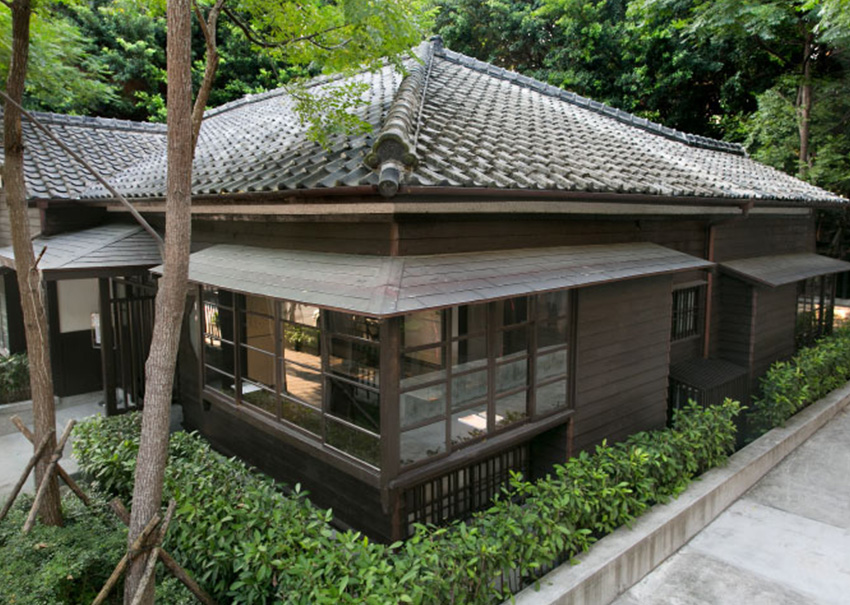
Hip Roofs / Photo by Lin Bailiang
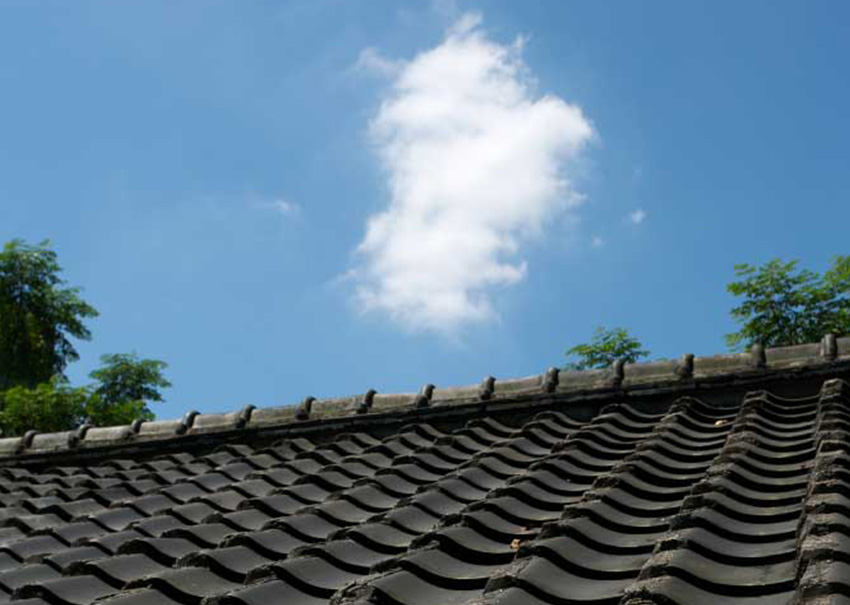
Japanese Tile / Photo by Lin Bailiang
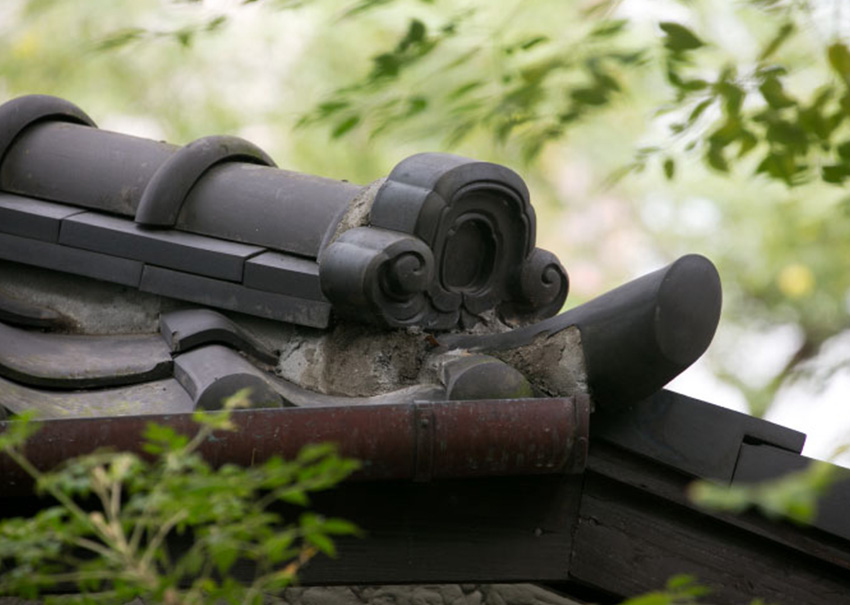
Ghost Tiles / Photo by Lin Bailiang
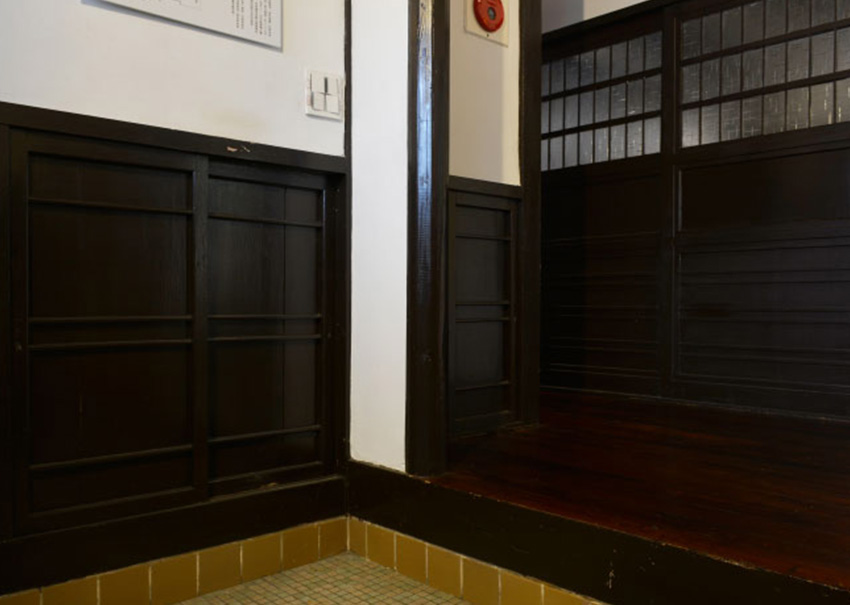
Storage box
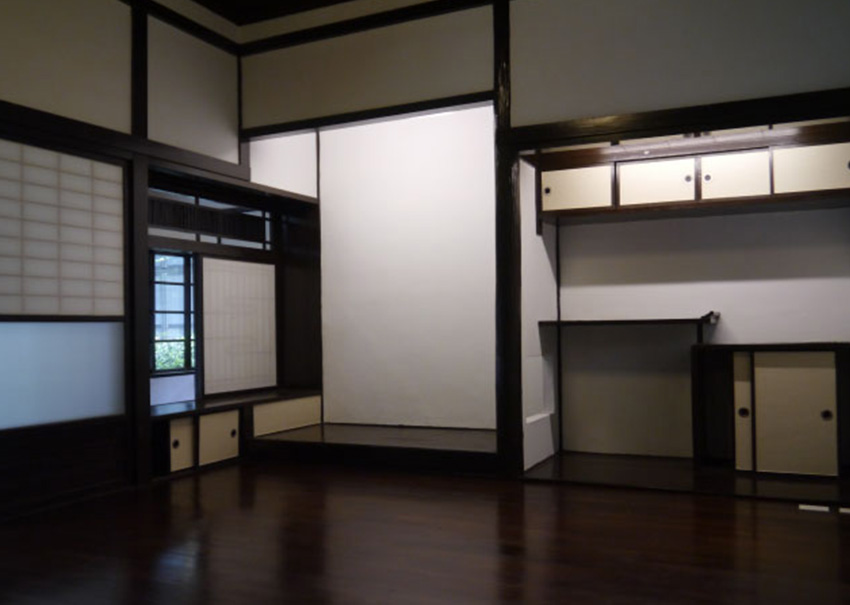
Study nooks, alcoves, recessed areas
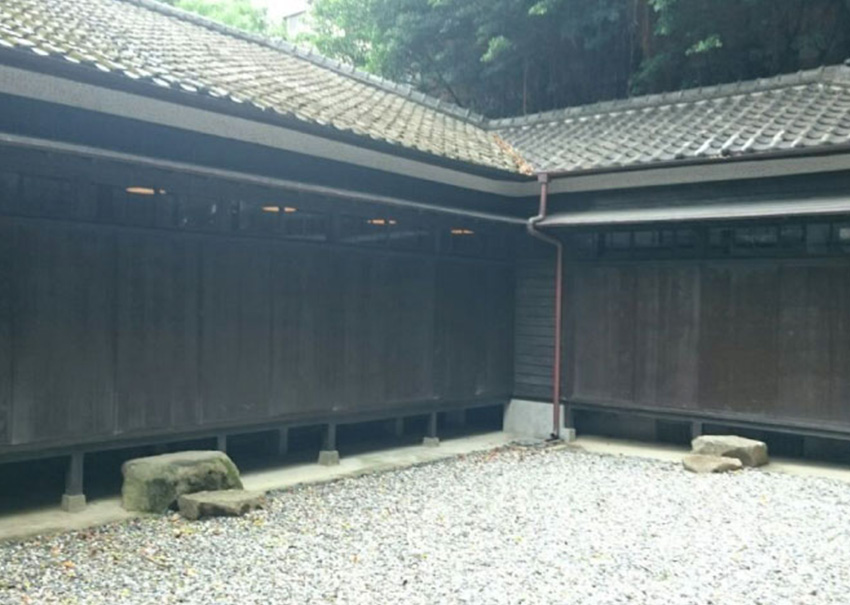
Raingear cabinet
Vision underlying the effort to restore these buildings
Immediately upon walking through the main Jinan Road entrance, you will see the Joy of Reading Hall and Qidong House - two Japanese-era dormitories. The interiors carefully preserve original interior features such as shoe cabinets, alcoves, recessed areas, study nook, raingear cabinet, rain-preventive screens, and others.
The original look of Qidong House was preserved as much as possible with regard to the structure, materials, and construction methods used. Original cabinets and wardrobes were repurposed as exhibition cabinets, allowing visitors to enjoy exhibitions in an authentic historical setting. The layout of the Joy of Reading Hall has changed more dramatically. The architects removed the ceilings during the restoration to allow visitors to view the original wooden structure and to provide a great, new open-concept space. The seating areas in the original building have been transformed into sunken activity areas where visitors may sit on recessed tatami mats or wooden chairs and immerse themselves in this elegant environment for reading.
Walking into the TLB from Lane 53, Qidong Street, you will see five smaller Japanese-era dormitory buildings. These newly restored structures are similar in appearance and internal layout, but the details in each reveal that each has a unique story to tell. The innermost building, the Muse Garden, most authentically retains its Japanese architectural stylings, while the buildings become increasingly more modern as you move outward. This purposive approach to restoration was intended to highlight how these buildings have been altered and renovated over time to meet the changing needs of their residents.
The area between the front yards along Lane 53, Qidong Street through to the backyards of these dormitory buildings reveal the influence of changing times. The front yard spaces retain the aesthetic stylings of traditional Japanese courtyards, while backyard spaces are covered over by a wooden platform that connects to a gravel-covered corridor and a low, red-brick wall.
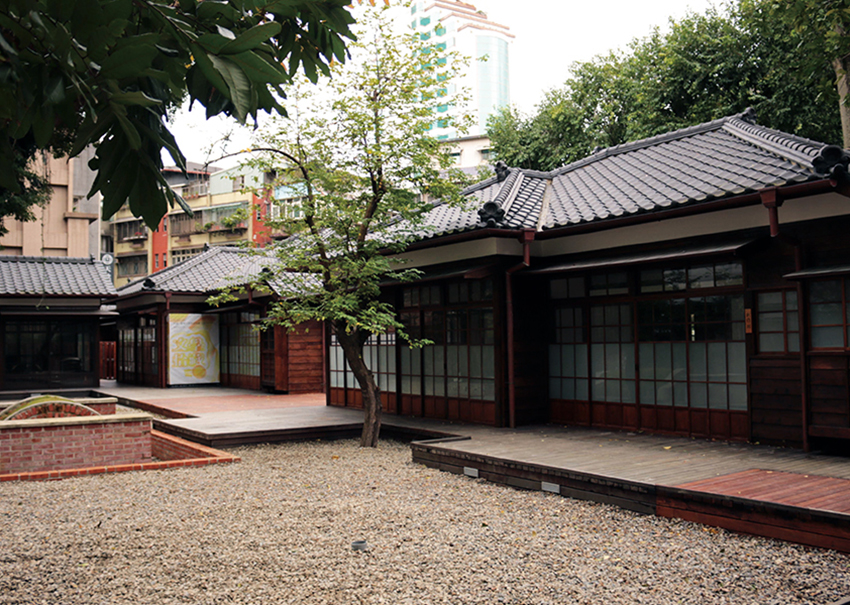
The larger and more functional layout of the renovated Taiwan Literature Base complex is better suited to the needs of TLB activities.
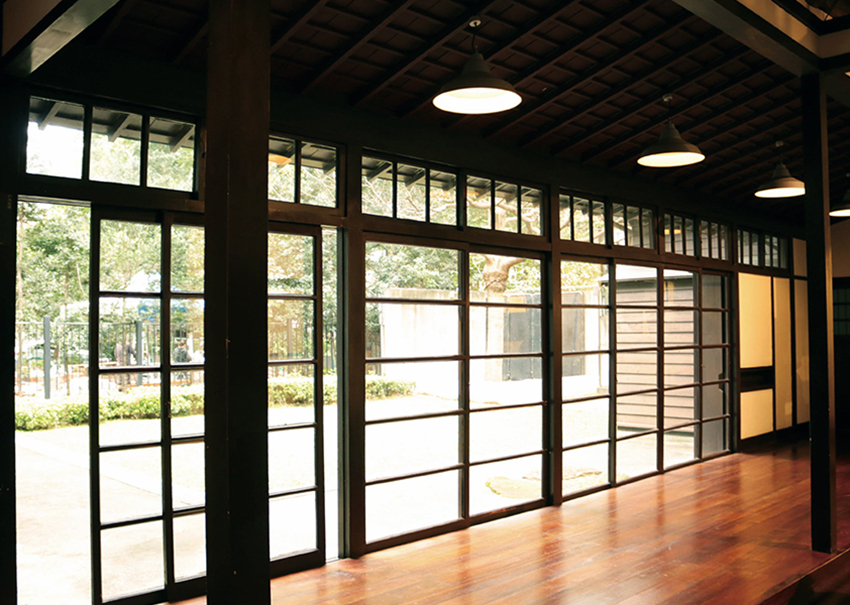
The Joy of Reading Hall was renovated “to preserve its original design while adding flexibility”.
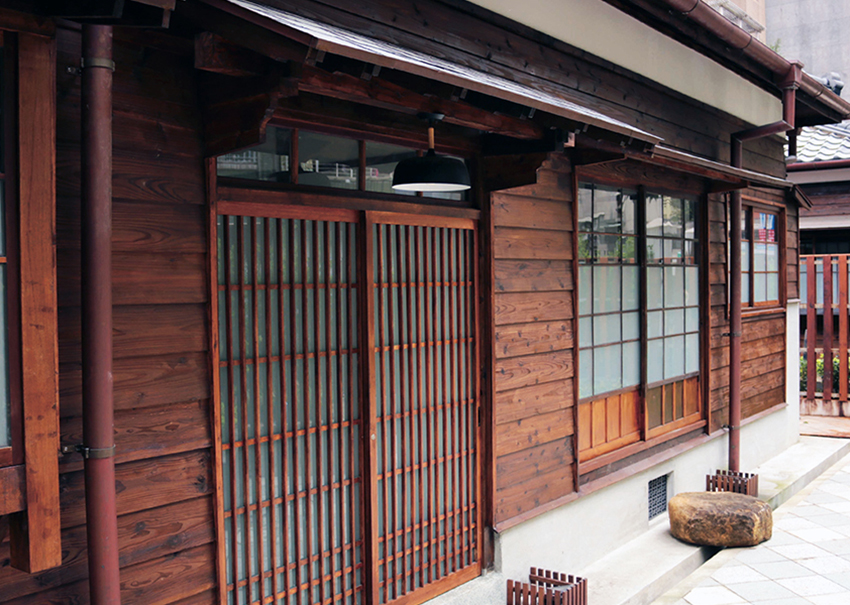
The five Japanese-era dormitory houses along Lane 53, Qidong Street reflect the spatial and personal preferences of their previous residents.
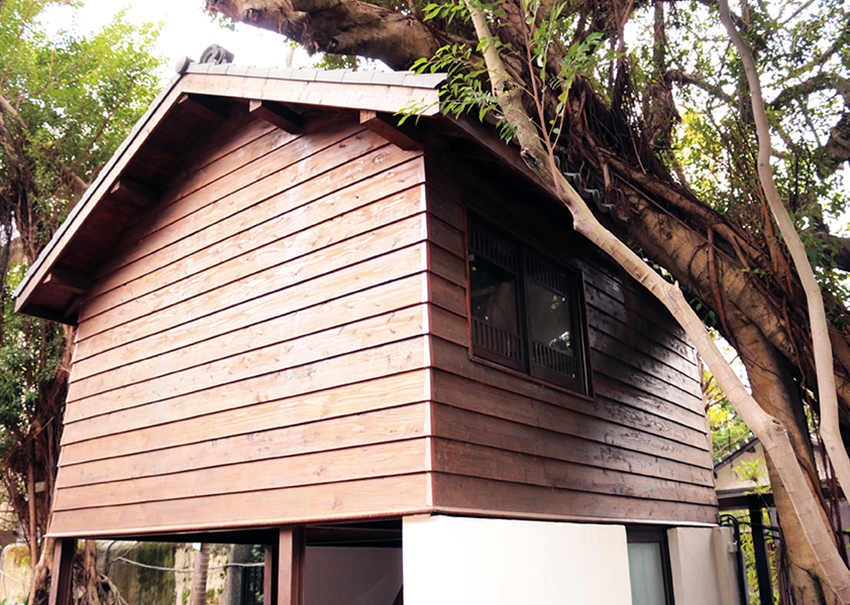
The tree houses between the first and second rows in the complex are unique places for dining.